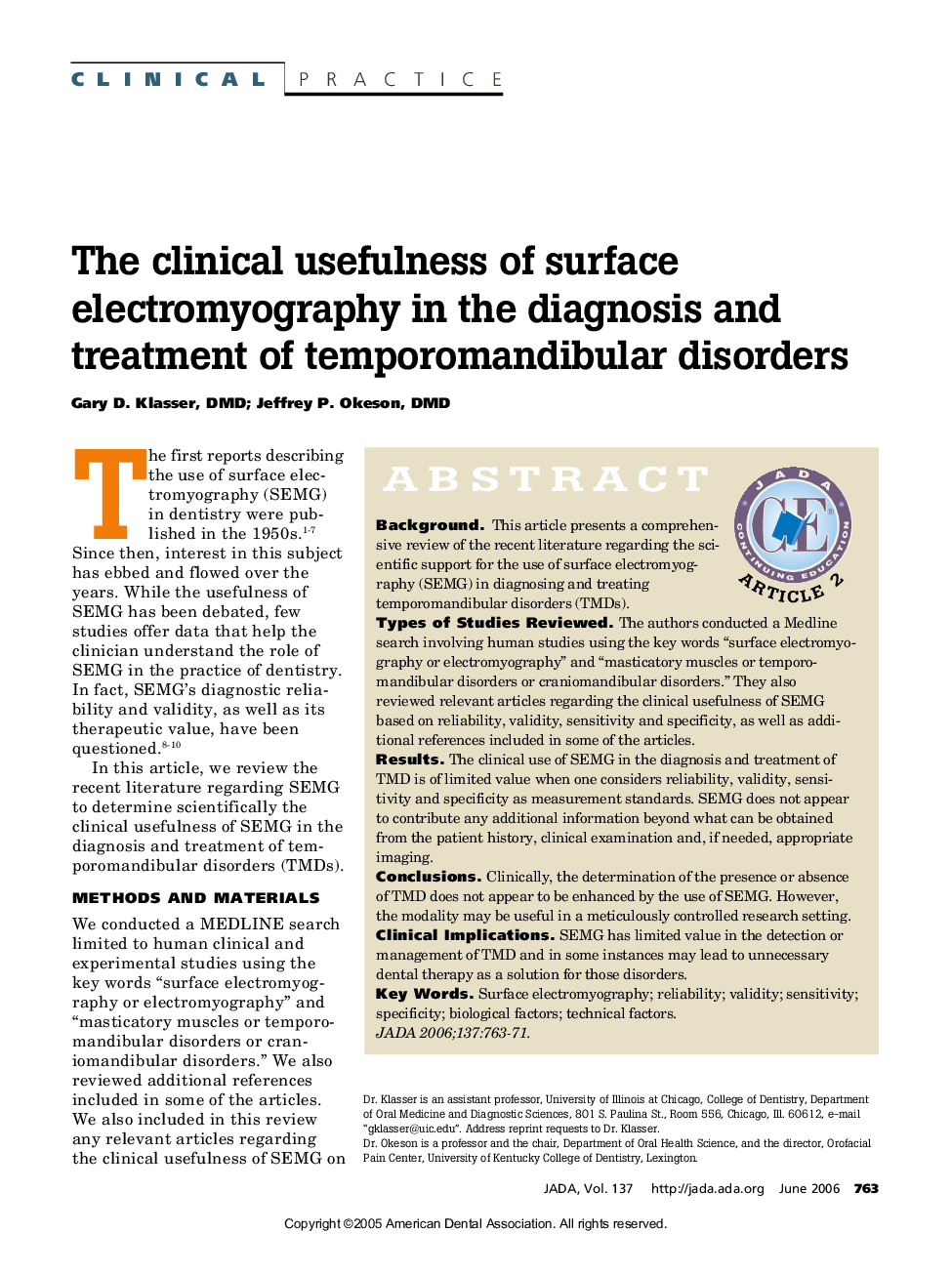| Article ID | Journal | Published Year | Pages | File Type |
|---|---|---|---|---|
| 3140262 | The Journal of the American Dental Association | 2006 | 9 Pages |
ABSTRACT BackgroundThis article presents a comprehensive review of the recent literature regarding the scientific support for the use of surface electromyography (SEMG) in diagnosing and treating temporomandibular disorders (TMDs).Types of Studies ReviewedThe authors conducted a Medline search involving human studies using the key words “surface electromyography or electromyography” and “masticatory muscles or temporomandibular disorders or craniomandibular disorders.” They also reviewed relevant articles regarding the clinical usefulness of SEMG based on reliability, validity, sensitivity and specificity, as well as additional references included in some of the articles.ResultsThe clinical use of SEMG in the diagnosis and treatment of TMD is of limited value when one considers reliability, validity, sensitivity and specificity as measurement standards. SEMG does not appear to contribute any additional information beyond what can be obtained from the patient history, clinical examination and, if needed, appropriate imaging.ConclusionsClinically, the determination of the presence or absence of TMD does not appear to be enhanced by the use of SEMG. However, the modality may be useful in a meticulously controlled research setting.Clinical ImplicationsSEMG has limited value in the detection or management of TMD and in some instances may lead to unnecessary dental therapy as a solution for those disorders.
